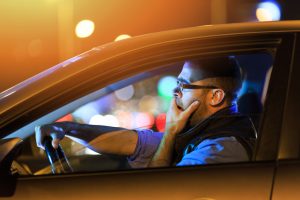 Driving while you are tired increases your risk of a motor vehicle accident. Oftentimes these accidents are single-vehicle crashes, but they may involve other vehicles on the road. They most often occur between the hours of 6 a.m. and midnight, as well as in the afternoon, according to the National Highway Traffic Safety Administration. Our circadian rhythms naturally dip during these hours, making us feel sleepy. It is very important to note, however, that a drowsy driving episode can occur at any time of day or night.
Driving while you are tired increases your risk of a motor vehicle accident. Oftentimes these accidents are single-vehicle crashes, but they may involve other vehicles on the road. They most often occur between the hours of 6 a.m. and midnight, as well as in the afternoon, according to the National Highway Traffic Safety Administration. Our circadian rhythms naturally dip during these hours, making us feel sleepy. It is very important to note, however, that a drowsy driving episode can occur at any time of day or night.
Drowsy driving is dangerous for many reasons, including:
- Increased risk of nodding off behind the wheel (which can lead to a crash even if it’s just a split second of time)
- Blurry vision
- Impaired judgement and coordination
- Decreased alertness and concentration
- Slowed reactions
Unfortunately, many drowsy drivers think they can power through the fatigue by rolling down the window for a breeze, turning up the radio, or having another cup of coffee before hitting the road. None of these measures actually creates the rest your body needs. While rolling the window down for a burst of air may give you a momentary jolt of alertness, it is nowhere near the type of whole-body physical rest required to drive safely.
The best way to avoid fatigued driving is to prevent it. Prioritize getting 7 to 8 hours of sleep every night, even if that means improving your sleep hygiene, which includes shutting off screens at least an hour before bed, avoiding caffeine and excessive alcohol before bed, adopting an exercise routine, and taking steps to reduce stress in your life.
If you or a loved one was injured in a motor vehicle accident caused by a careless or reckless driver, please use our directory to find an experienced car accident attorney in your area. The attorney will review the details of your situation and let you know if you have a case to pursue compensation. Oftentimes the initial consultation and case evaluation are complimentary, but check with the specific attorney first.















